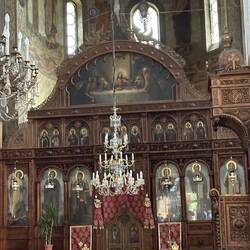Oct 14 - Heading Home
 October 14, 2023 in Romania ⋅ ☀️ 16 °C
October 14, 2023 in Romania ⋅ ☀️ 16 °C
And so, the journey is coming to an end. We had a leisurely breakfast and said final goodbyes to some of our fellow travelers. We had time before our 10:40 a.m. pick up, so we went for a walk on yetRead more







































































































































































Traveler So happy you had three weeks of glorious weather and experiences. Safe travels home.
Traveler Welcome home!!
It was terrific meeting you and Doug, Maureen! I hope you make it back to Canada safely! [Barry]
Traveler Back home safe and sound last night. Great meeting you too. Keep on traveling!
Sds like a great trip! [Patricia Lang]